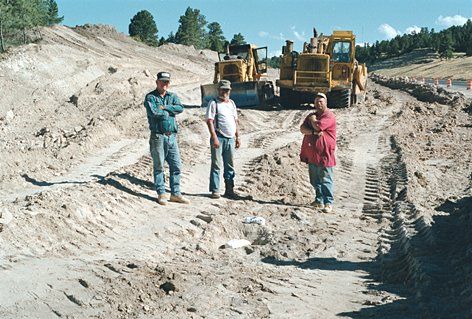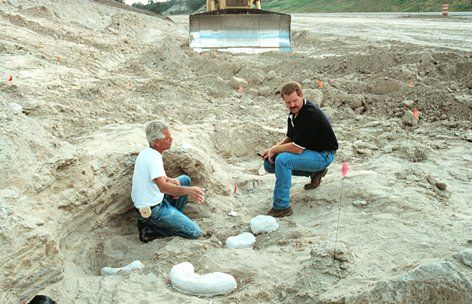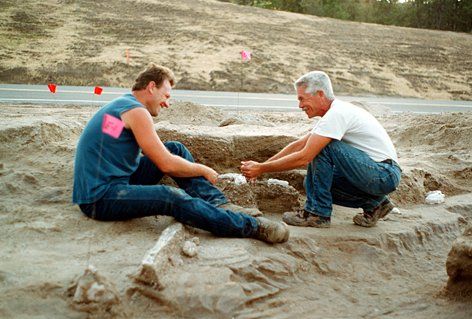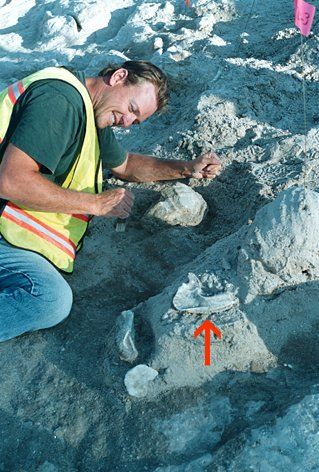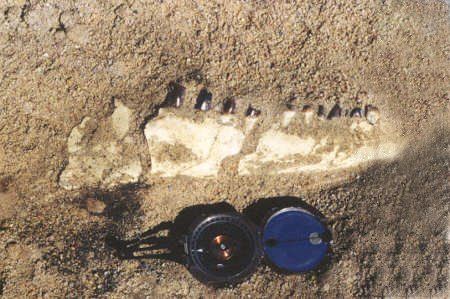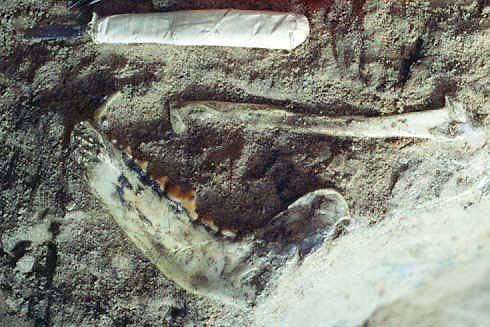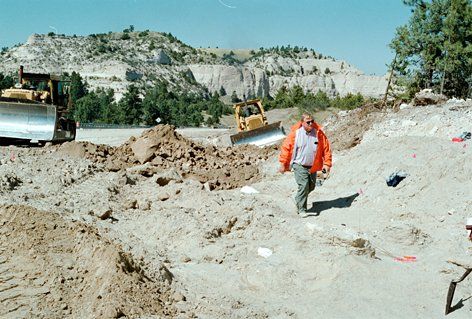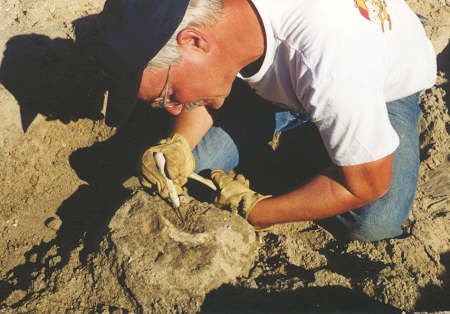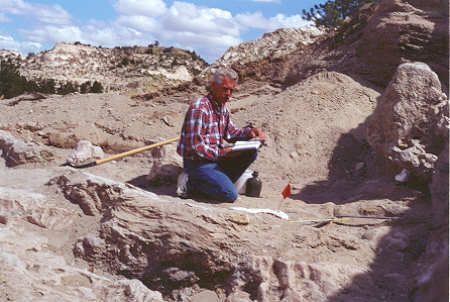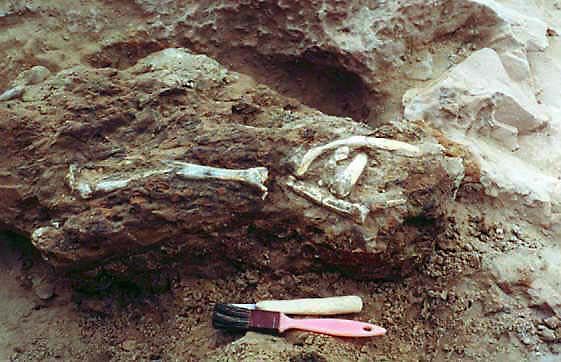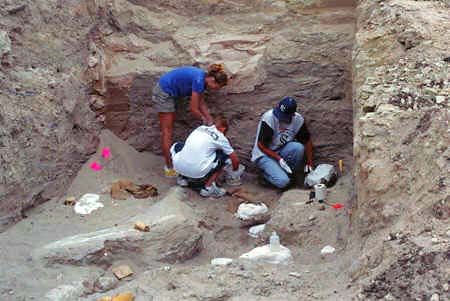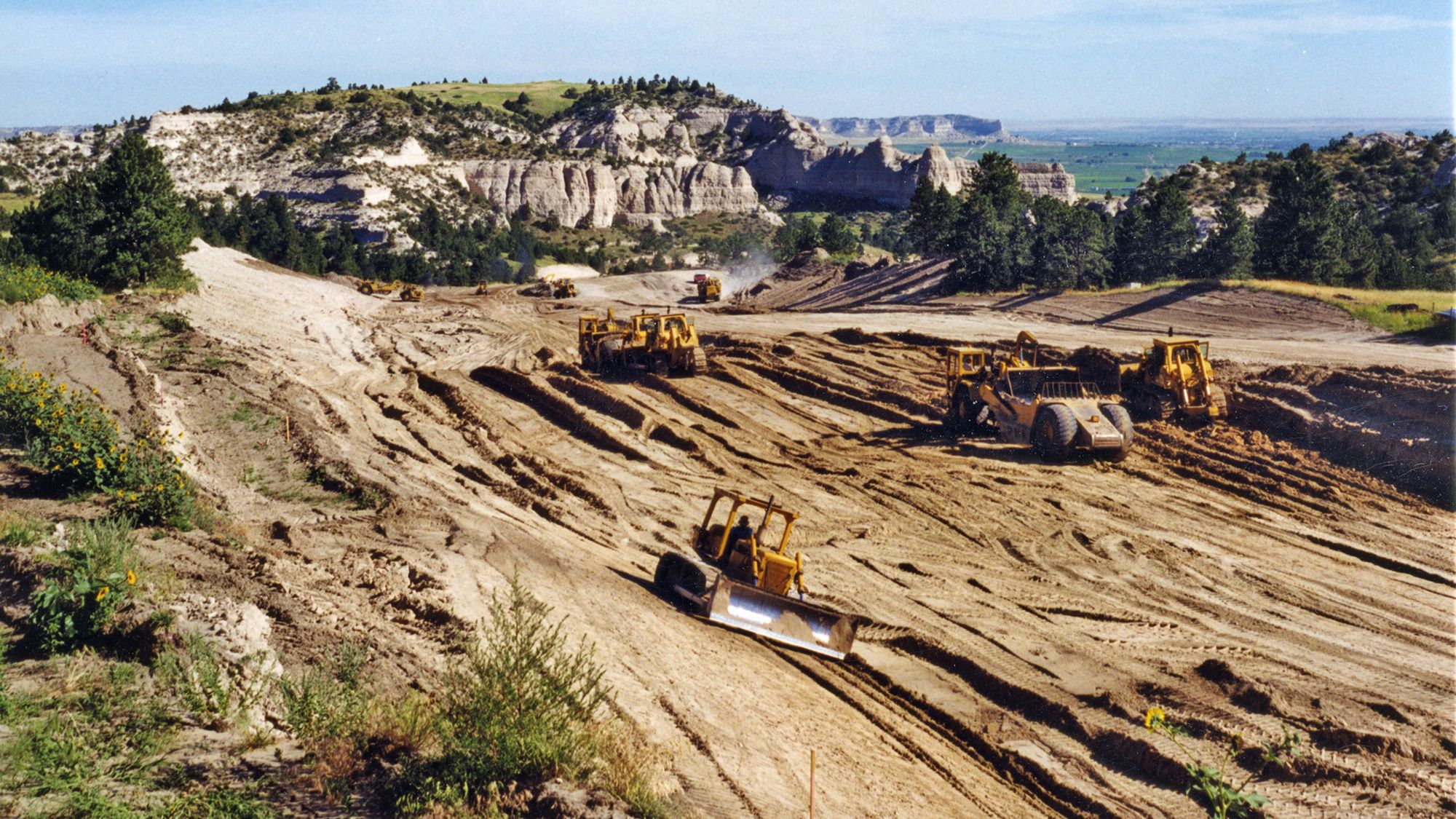
Highway Paleontology Program
Paleontology in the Wildcat Hills
< Vertebrate Paleontology Home
The Highway Paleontology Program is a partnership between the University of Nebraska State Museum and Nebraska Department of Transportation.
Highway Salvage Paleontology in the Wildcat Hills: Life in the Past Lane
Forty years ago, legislation mandated the salvage of fossil remains threatened by highway construction. Nebraska introduced the country’s first paleontological salvage program (see Oct./Nov.,1996 Roadrunner) which is based on close cooperation between contractors, the Nebraska Department of Roads (NDOR), and the University of Nebraska State Museum (UNSM). In areas where new construction threatens paleontologically sensitive areas, such as the Wildcat Hills south of Gering, museum paleontologists follow a basic three-phase strategy to recover the maximum amount of scientific information without causing construction delays.
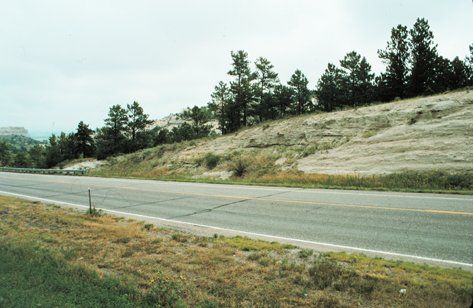
View north prior to construction. The diagonal line in the road cut is the geologic contact between the 20 million-year-old river channel and the underlying 28 million-year-old Gering Formation. This cut produced a treasure-trove of fossils during construction.
Phase 1: Pre-Construction Salvage
Early notification of the proposed upgrade of N-71 allowed us to survey the large roadcuts made during the original alignment and collect vertebrate fossil specimens exposed by erosion. Several beautifully preserved, articulated skeletons of the sheep-like oreodont Merychyus, a camel, and a small deer were excavated, however the most important discoveries were tiny teeth of mouse-size critters. Sixteen different small-mammals including a new species of gopher were recovered from over a ton of gravel screened on site. The fossils indicated these rocks were deposited by an ancient river over 20 million years ago.
Phase 2: Salvage During Construction, 1999
You might think heavy equipment and fragile fossils is a combination to be avoided. Quite the contrary! In vast areas of hard rock, bulldozers and scrapers are the most efficient means of discovering new fossils. Searching through large sandstone blocks left in the wake of D-9 ripper-cats we collected partial skulls of three rare mammals, found for the first time in these deposits; the four-horned deer Syndyoceras, a tapir, and a hippo-like anthracothere. As the fleet of a dozen scrapers neared grade to the north, they uncovered a veritable treasure-trove of fossil bones. Platte Valley Construction Superintendent Dennis Giesman instructed his crews to work around this area while we resorted to the more conventional tools of our trade; namely shovels, trowels and paint brushes. During the next month, the entire bonebed was excavated from median to backslope with phenomenal results; over 200 specimens were collected, a third of which were skulls or jaws!
This site is scientifically important for many reasons. Rocky Mountain gravel discovered near the bottom of the channel indicates a major, through-flowing river deposited the sediment. Petrified logs were common, suggesting a heavily forested valley. The fossil mammals represent a unique "jungle fauna" composed of a great variety of low-crowned browsing herbivores and the carnivores that fed upon them. It is the only locality of this age in the Wildcat Hills that has produced a significant vertebrate fauna. For this reason District Engineer Tim Weander granted permission to continue this excavation after highway construction was completed.
Phase 3: Post-Construction Salvage, 2000 and beyond
In the spring of 2000, the backslope was reopened and excavated throughout the summer with equally astonishing results. Several jaws of an ancestral bear, an extremely rare weasel, and a new genus and species of large beaver were highlights of the second season. Thus far, 20 different large mammal species have been identified from this site. The combined total of 36 large and small mammals make it the most diverse fauna of this age in the Great Plains.
Acknowledgments
We would like to thank the Nebraska Department of Roads (Transportation), District 5, Western Construction Company, and the University of Nebraska State Museum for their assistance throughout the project. Without their cooperation, a salvage operation of this magnitude could not have been successfully completed.







